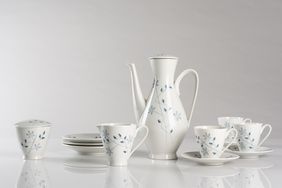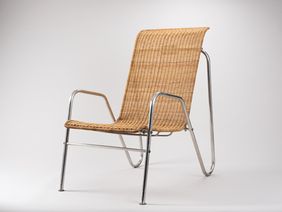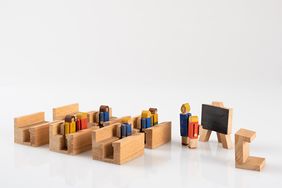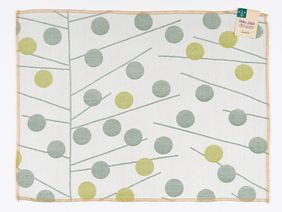
Modernist Archive Represented with Exhibits on Loan at Two International Exhibitions on Design History and at Centre Pompidou
For the first time, two major internationally oriented exhibitions are explicitly dedicated to Eastern European and German-German design history. In Warsaw, the »Cold Revolution« exhibition opened on 27 May 2021 at the Zachęta National Gallery, and at the Vitra Design Museum in Weil am Rhein, the »German Design 1949-1989« exhibition has been running since 20 March 2021. The Modernist Archive is represented at each with a total of 25 exhibits on loan.
Both exhibitions focus on design pieces that seek to break with stereotypical notions of design shaped by a planned economy and enthusiasm for propaganda.
In the Vitra Design Museum, the aesthetics of the pieces in their arrangement to each other will be made to speak in an empathetic and thought-provoking way. Here, GDR design classics by Horst Michel and Wolfgang Dyroff will be on display, for example the garden chair for the International Garden Show in Erfurt in 1959 and the car door handle for the first Trabant model series in 1957.
In Warsaw, the theme is broader and more complex. The exhibition is being promoted by highlighting »discrepancies between the images presented and the actual situation« in the planned economy and by questioning the role of art and culture in »creation of the socialist social order and the appreciation of the new elites«. In addition to other exhibits, two moka pots with and without decoration from 1957 by Horst Michel are presented here in juxtaposition to each other.
Both curatorial teams have also searched for hidden exhibits that are not in the spotlight of the usual narratives of visual production and design history, and in the process discovered the collection of the »Institute for Industrial Design« in Weimar.
Also on display are Horst Michel’s palm wood bowl, which won a gold medal at the 1957 Milan Triennale, and exhibits from the »second«, often unnoticed series, such as Sigrid Kölbel’s fabric designs and student Eila Stedtler’s doll school from 1949.
The exhibition »Women in Abstraction« at the Centre Pompidou focuses on the work of female artists from the 1860s to the 1980s. Here, the Modernist Archive is represented by the carpet designed by Gertrud Arndt for Walter Gropius’ Director’s Room.
Above all, it remains exciting to see what the presentations in Warsaw and Weil am Rhein will achieve. It is striking that, as a consequence of the Bauhaus Centenary in 2019, enquiries about the GDR design collection are steadily increasing, both from researchers and designers. The collection is still a hidden treasure trove that needs to be systematically processed.
Text: Christiane Wolf, Director of the Archive of Modernism
www.uni-weimar.de/adm



